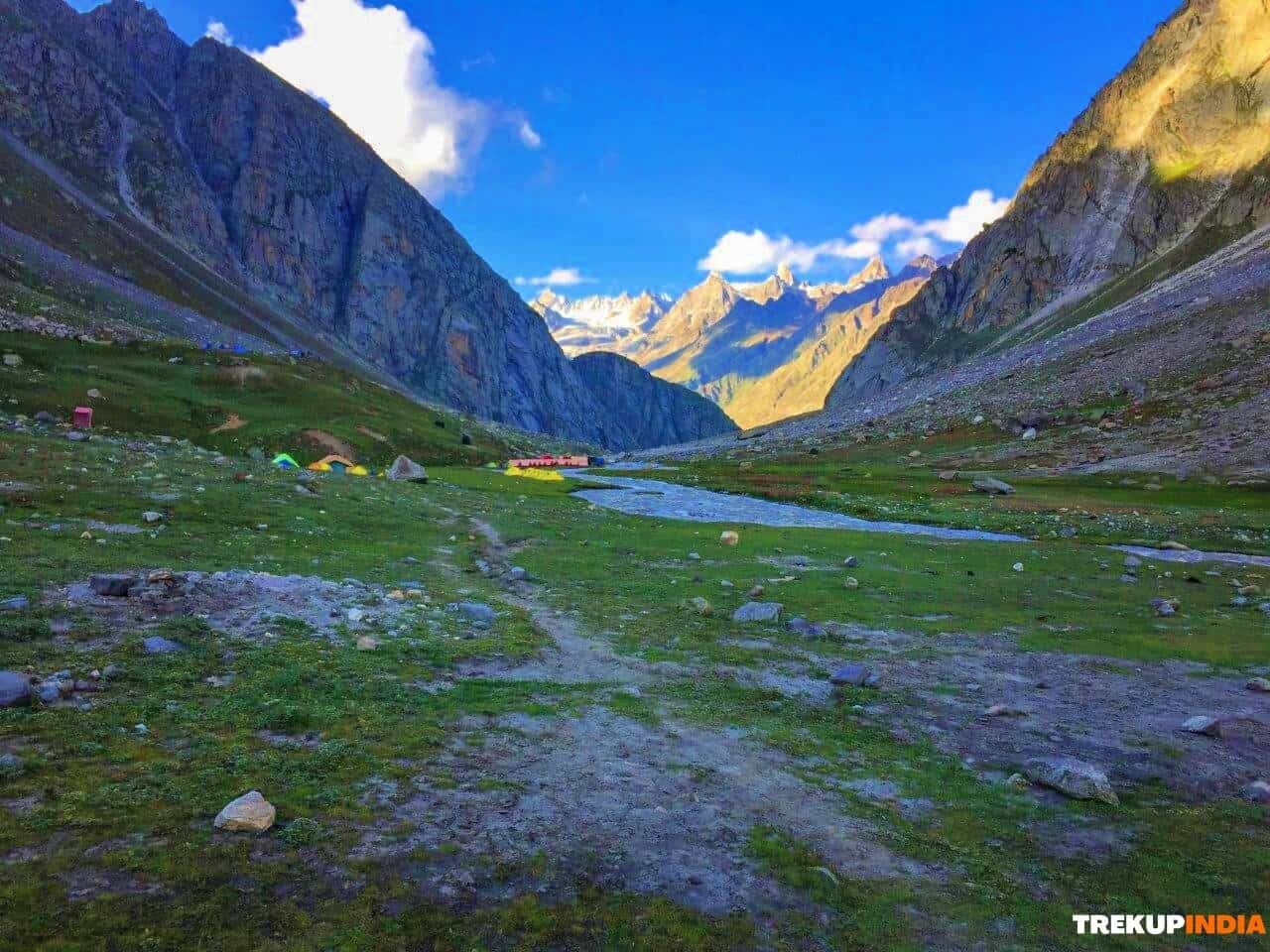Why You Should Do Phulara Ridge Trek
Phulara Ridge Trek is located within the Govind Pashu Vihar National Park. It is situated in the area’s shadow, which means the sun’s rays don’t strike the site directly. This means that the snow on the trails lasts longer and sometimes even into spring.
Pushtara Meadows: The sheer size of the meadows will awe you. The folds and folds of carpeted green hills extend as far as your eyes can reach. Wildflowers bloom in all their splendor. There is a 360-degree view of mountains covered in snow.
Forest: If you only go for a short walk, the forest on Phulara Ridge is highly dense. It is so thick that just streams of light coming through the forest’s dark abyss will illuminate your way. There are many varieties of trees, including pines, oaks, and oaks. You can also see silver birches, dwarf rhododendrons, and maples.
Birds: The dense forest of Phulara will be awed by the abundance of wildlife and birds. Our explorers spotted 11 Himalayan monals! This bird of Uttarakhand is not easy to spot and is among the most colorful birds we’ve seen. You could also see treepies, barbets, woodpeckers, and Himalayan Whistling Thoroughfares and Drogos (barbets).
Flowers: You will find yellow marsh marigolds, purple lilies along the trail, and yellow flowers popping out of the grass. Walking from Bhojgadi, you will see green meadows dotted with Himalayan wildflowers, Brahmakamal, and fankamal.
Rivers: You will be driving along the beautiful Yamuna and Tons River, which changes color from milky white at some places to deep green in others.
Mountains: You will see Kedarkantha Peak as you reach Sikolta, along with Swargarohini, Devkyara, Lekha Top, Vijay Top, and others. Other visible peaks on this trek are Hanuman Top, Sarutal Top, Bandarpoonch, Kalang, Hata Peak (HKD), and Rangala.
Wildlife: While on the trek, langurs jump from one tree to another effortlessly.
Traditional Houses: As you get close to Taluka, a quaint village settlement, you will see wooden huts with stoned roofs.
Mythology: Juda Ka Talab is a famous alpine lake in the Sankri region; there is a renowned legend for the lake. Almighty Lord Shiva was searching for a place to meditate; when he saw this place, he opened a few strands from his head (juda- strands of hair tied together). The water from the strands formed this divine lake (talab meaning lake).
for booking and more information
Share this article
Want To Trek Like Pro?
Check out the following videos if you want to trek like a pro trekker and improve your skills. These videos contain helpful tips, tricks, and techniques to help you trek like a pro. Whether you’re a beginner or an experienced trekker, these videos can provide valuable insights to enhance your trekking experience. So, watch the videos below by Trekup India experts to take your trekking skills to the next level.







Know Everything About Acute Mountain Sickness
Acute Mountain Sickness is a medical condition that can occur when individuals travel to high altitudes, typically above 8,000 feet. It is caused by the decrease in air pressure and oxygen levels in the air as altitude increases. Symptoms of Acute Mountain Sickness may include headache, nausea, vomiting, dizziness, and difficulty sleeping. To avoid Acute Mountain Sickness, it is important to gradually adjust to high altitudes and seek medical attention if symptoms worsen. To learn more about this condition, check out the videos by Trekup India.









